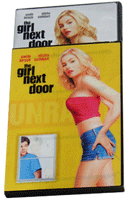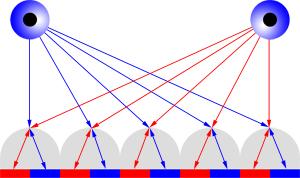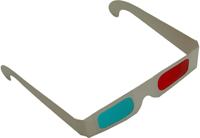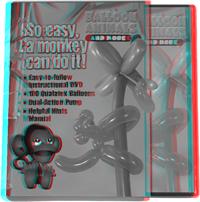Lenticular Printing
Introduction

Have you noticed lately when you walk through the DVD section of a department store that some DVDs have pretty cool visual effects on their packaging? For example, on the slipcase of "The Girl Next Door" you can see two different images as you move your head slightly side way. The effect is called flip which is essentially two or more images to be viewed from different angles. If you touch the surface of the DVD case you can feel there is a piece of plastic with a lot of lines on it. The plastic is called "lenticular sheet".
Lenticular printing is nothing new and has been around for over a century. You might have seen it on rulers, on key chains, or other small premium packaging. Lenticular printing usage was not popular because the manufacturing cost was way too high. But not anymore! New Cyberian has invested in the lenticular printing business and has come up with good approaches to make lenticular printing more affordable. Now not only the big Hollywood productions can afford it, you as a low-budget indie musician or filmmaker can use lenticular printing to enhance your product too.

Beside flip, lenticular printing is famous for its 3D effect. With proper design, objects on an artwork can have depth or distance among them. This is accomplished by the theory that our left and right eyes are seeing a slight different image to percept depth in the real world. We use an animated GIF here to show you the idea how the illusion was created.
How does lenticular work?
Without going too deep into the physics of optics, we use the picture below to explain an over simplified theory on how lenticular works.

Each line on a lenticular sheet can be considered as a convex lens. When the lens are lined up precisely over a picture, we can make the right eye only see the red part of the picture and the left eye only see the blue part. That means we will slice the picture below the lenticular sheet into different parts; some part for the right eye and some part for the left eye. This process of slicing a picture is call interlacing if you want to be more techie on the terminology. Again we have over simplified the picture with just two slices under each lenticule but in reality we can have up 12 slices or more, depending on the precision of the alignment. By seeing different pictures for the left and right eyes, our brain will combine the pictures to create the illusion of depth.
Artwork Preparation For The Effects of Lenticular Printing
As mentioned earlier lenticular printing can be used for the following effects: 3D, flip, morph, zoom, and animation. For the sake of discussion we can simply classify them into two categories, i.e. 3D and non-3D. Even this classification is a bit artificial as the principle behind all the effects are the same. We make the classification simply from the artwork preparation point of view as the treatment of artwork is somewhat different between 3D and non-3D.
3D Artwork Preparation
Ideally if you want to have true 3D you should line up few equally spaced cameras in a straight line and take the pictures simultaneously. The pictures can then be interlaced and combined to create the single picture to be overlaid with lenticular sheet. But in reality this is very difficult if not impossible. Alternatively, you can create a layered Photoshop artwork and let us know your expected distance between the layers. For example if you have 5 layers and a background picture and you want one inch visual distance between the first layer and the background, all you need is to specify the distance between all other layers. The sum of these distances should be around one inch.
Non-3D Artwork Preparation
For effects such as flip, morph, zoom, and animation we just need to have the successive pictures. For morph, you can supply us two pictures, i.e. the changed from picture and the changed to picture. We will use special morphing program to render the morphing for you.
How To Order
For now we offer slipcases for jewel cases and amaray cases. Please choose product #38 Slipcase w/ Lenticular Printing from the left navigation area and add to your shopping cart. Unlike all other standard products lenticular printing requires more communications. We encourage to call us to discuss your requirements. The better we communicate, the better the final result will be. Please call us at 877-423-4383 if you are interested in using lenticular products.
Proofing for a design can be done by animated GIF or by anaglyph. An anaglyph is a red and blue picture to be viewed by the anaglyph 3D glasses. We will send you a pair of these glasses and email the anaglyph. If you have a anaglyph glasses now you can put it on to see the picture here. Make sure to have the red glass on the left eye and the blue glass on the right eye.

